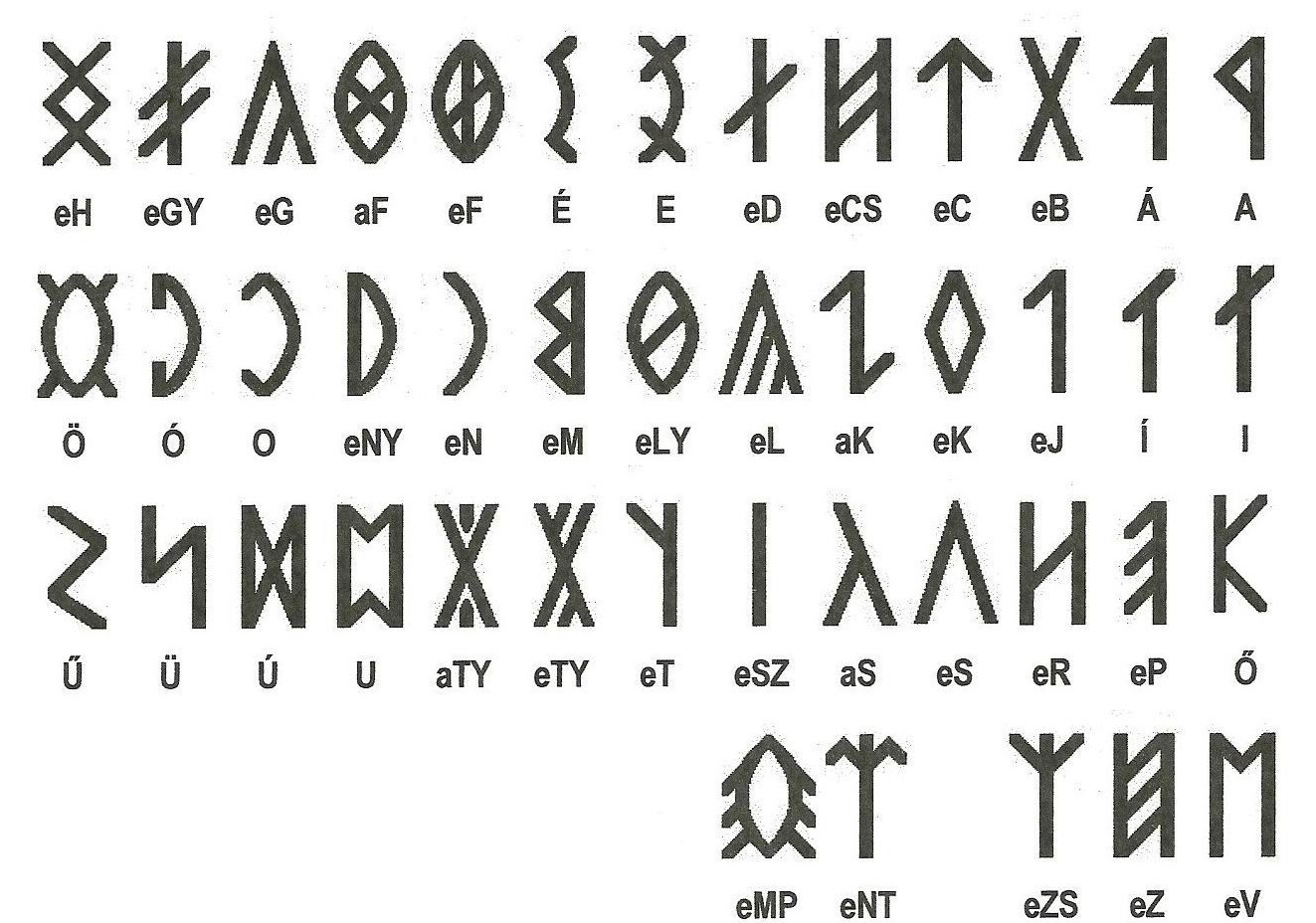Insider's Guide: Ancient Hungarian Script
- 8 Jan 2024 12:42 PM

The rich historical tapestry of this special country includes the symbolism of the ancient Hungarian script, an intricate system of writing that reveals tales of a bygone era. It’s also used on some road signs, which is where many expats encounter this enigmatic writing.
This ancient Hungarian script is called rovásírás, it stands as a testament to the resilience and tenacity of the Hungarian people throughout their turbulent history. From its mysterious beginnings to its modern-day revival, this unique writing system continues to inspire awe and curiosity, offering a captivating glimpse into Hungary's cultural heritage.
So now step back in time as we delve into the depths of Hungary's linguistic history, tracing the origins of the ancient Hungarian script and uncovering its significance in shaping the nation's identity. From its mysterious roots to its modern-day revival, this insider’s guide will shed light on a facet of Hungarian culture that remains cherished and revered yet closed to most.

Glimpse into Hungary’s Past
The ancient Hungarian script, known as "rovásírás," is an ancient writing system that traces its origins back to the early centuries of the Hungarian people. Rovásírás is unique in that it is a non-alphabetic script, consisting of symbols and characters that represent syllables rather than individual sounds. This distinctive feature sets it apart from most of the writing systems prevalent in other parts of the world.
Unraveling Hungarian Origins
The exact origins of the ancient Hungarian script remain shrouded in mystery, captivating historians and linguists for generations. Some scholars believe that the script developed organically from various tribal markings and symbols used by the Hungarian tribes in the Carpathian Basin during the early Middle Ages. Others speculate that it was influenced by Turkic, Sumerian, or other ancient scripts present in the region at the time.
Golden Age of Rovásírás
The heyday of the ancient Hungarian script is often referred to as the "Golden Age of Rovásírás," which flourished between the 10th and 13th centuries. During this period, rovásírás was widely used for inscriptions on stone monuments, wooden objects, and even personal belongings. It played a crucial role in recording historical events, laws, and religious texts, offering a unique glimpse into the daily lives and beliefs of the early Hungarian people.
Rovásírás's Decline and Perseverance
Despite its prominence during the Golden Age, the usage of rovásírás gradually declined with the spread of Latin script and Christianity in Hungary. The influence of Latin and other Western European scripts became dominant, leading to a decline in the ancient Hungarian script's prevalence.
However, the spirit of rovásírás never truly vanished. Some remote regions, particularly in Transylvania, kept the script alive through the centuries. The preservation efforts of passionate scholars and archeologists played a significant role in keeping the memory of rovásírás alive, ensuring its legacy was passed down through generations.
Rediscovery and Revival of Rovásírás
The 20th century witnessed a renewed interest in Hungary's cultural heritage, and this rekindled enthusiasm led to a resurgence of the ancient Hungarian script. Scholars and linguists began extensive research into the ancient writings, and efforts were made to decipher and understand the inscriptions.
Moreover, the Hungarian government and cultural institutions took active steps to support the revival of rovásírás. Schools and cultural centers started teaching the script as part of the curriculum, and traditional craftspeople began incorporating it into their artwork. This revival not only strengthened the sense of national identity but also allowed for a deeper appreciation of the nation's rich linguistic history.
Embracing Cultural Heritage Today
In modern Hungary, the ancient script of rovásírás has become a symbol of cultural pride and national identity. It can be found adorning various cultural artifacts, public spaces, and traditional crafts, reminding citizens and visitors alike of the profound historical roots of the Hungarian nation.























LATEST NEWS IN community & culture